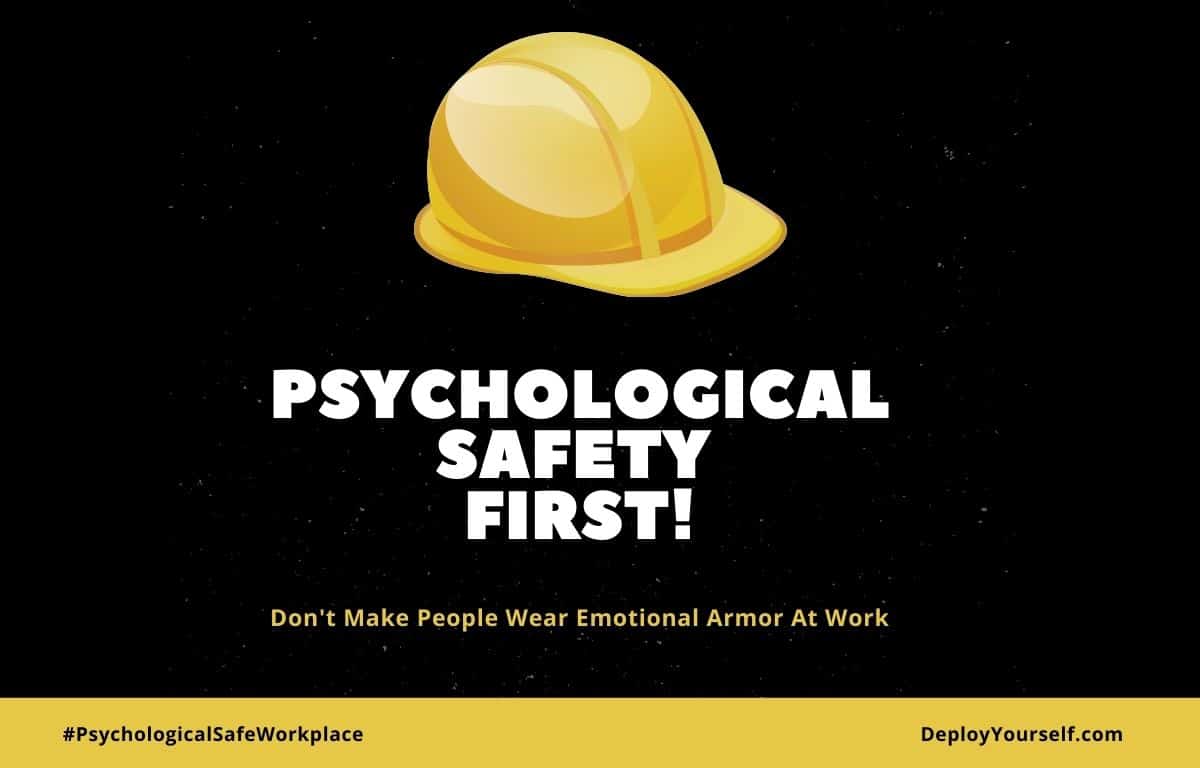Every team is different as human beings are complex. And organizations can be even more complex. If the team members do not gel and work together effectively, problems can arise very quickly or they can slowly simmer under the surface. Talk about missed deadlines, infighting, declining productivity, poor customer service, etc. All of these have a bearing on the team’s output and the company’s bottom line.
Finding the right people is the first step in building a high-performing team. However, bringing several talented individuals together under one roof is not enough to make an effective team. So what can you do to ensure the group of people becomes an effective unit which works together? Here are 7 common attributes of highly effective teams, and how to build such a team?
1. Good Leadership
Leadership has less to do with positions and more to do with the ability to influence. Today, leadership is no longer reserved for those at the top. Everyone has within them the ability to become a leader in their own sphere.
Effective teams don’t necessarily have one great leader. Instead, they promote a culture of leadership. That doesn’t mean multiple people competing to become leaders. It is about each individual playing their part and supporting each other for the benefit of the team.
Every team needs a north star—a clear and shared vision. Each member should know the direction and purpose behind what they are doing. A team without a united vision is like a group of chickens with a lot of energy. They will continuously be busy running around but never make any progress.
Therefore, a team should first co-create the shared vision, objectives, and outcomes before undertaking a project. Moreover, the vision should be restated often. It is not enough to engrain it on the door or post it on the website.
According to research by Rungway, 52% of employees don’t know their company’s vision. The same research shows employees want to be involved more in actualizing the company’s vision and values. Even when working on different facets of a project, team members should know the end goal.
When the team is involved in setting goals and objectives, they are more willing to rally behind them. As John F. Kennedy noted, “Effort and courage are not enough without purpose and direction”.
It is hard to focus when multiple needs are competing for your attention. And when the team is overloaded with tasks, chances are that people will struggle with one thing or another. With so many buttons to push and levers to pull, the team can get easily frustrated.

Highly effective teams navigate these muddy waters by focusing and prioritizing. Establishing priorities ensures that set goals are met on time. Unfortunately, it is human nature to want to accomplish everything at the same time. However, that is a surefire way of producing shoddy work.
Instead, it is better to prioritize your tasks according to their importance and urgency. That will involve listing down all your goals, and then deciding how long you would like to spend on each goal.
However, keep in mind that goals are not the actual actions taken, but rather the metrics you intend on hitting. Those metrics are what allow you to know whether the team is moving in the right direction. As such, to get closer to achieving those metrics, you must determine what projects need to be fulfilled first to get there.
So, how do you go about prioritizing projects?
Simply choose the 3 most important priorities and start working on them. People work better with clear and attainable goals. Therefore, choose 3 projects that will allow you to make a significant advancement towards a longer-term goal, and then set deadlines for their completion.
By putting the team’s focus on a few defined priorities, you will evade the all-too-common syndrome of spreading yourself thin trying to accomplish everything at the same time.
A good leader also understands the critical role shared values, standards, and boundaries play in the development of a high-performing team. This is because it is impossible to sustain high-performance standards without shared values.
Shared values ensure that your team does not always depend on you or policies to tell them what to do. Those values guide their behavior. The former EVP at Advanced Micro Devices, Tim McCoy, put it best, “values tell you what to do when you do not know what to do.”
A good example of how shared values can have a monumental impact on a team’s success is the Mayo Clinic. During the Civil War, a group of individuals known as the “Mayo Family” formed a medical practice whose entire operation was guided by two primary values:
- The only interest to be considered is the patient’s best interests
- Nobody is big or good enough to be independent of others
Guided by those values, the Mayo Clinic has gone on to become one of the world’s most reputable nonprofit hospital systems, with a net worth of around $17 billion.
Collaborate with your team to develop a set of values and standards to uphold. Those values should act as moral and operational compasses. In other words, they should guide the behaviors of the team.
In addition to shared values and standards, it is crucial to establish boundaries within the team. Boundaries prevent conflict within the team. Conflict (not disagreement, which is natural and healthy) is one of the biggest deterrents to productivity. With boundaries, everyone knows what is considered acceptable behavior, and what is not.
One of the most critical benefits of setting boundaries is the clear expectations that come with it. When everyone knows what is considered acceptable, they are more likely to uphold those standards.

2. Working Together and Collaborating
It might look safe to work with people who don’t ask a lot of questions. Effective teams understand that such behavior hinders collaboration. Instead, successful teams embrace challenging each other in a space of trust and psychological safety.
Good teams focus on tackling the problems together. They share knowledge across different departments, which enables the organization to adopt a unified approach in handling issues.
Collaboration brings unique skill sets and mindsets together to create a team that can overcome any obstacles together. A highly effective team understands and leverages each individual member’s strengths to create momentum.
Highly effective teams understand that friction is natural when working with others. They welcome the friction and use its energy to enhance relationships and improve productivity rather than the other way around. Strong teams work together rather than against each other.
3. Performing Team Rituals
Outside the workplace, rituals are often used to unite, motivate and rally people behind a common cause. A good example is an annual family holiday that brings everyone together. Rituals also have a place in the organization.
Apart from defining the team’s culture, they increase employee engagement and help create lasting bonds between individual members.
Employees in an organization work together for more than eight hours a day. That means they see and spend more time with their colleagues than they do with friends and family. It is imperative that they build strong bonds when working and also in their social lives.
Celebrating rituals such as birthdays by bringing a cake and holding parties is a great way to create and foster long-lasting bonds.
Many organizations insist that fun is ingrained in their culture. But many often struggle to create an environment where workers are truly happy. Like everything else, fun needs to be structured. Otherwise, it will get lost in the busyness of daily life.
Think about lunch outings, comedy nights, and beach days. A team that has fun together is more productive. That’s because work is likely to be less stressful and frustrating when you are having fun. Downtime decreases and job satisfaction and loyalty increases with fun.
Apart from celebrating wins and forging lasting relationships, some rituals also promote growth. For instance, having regular brainstorming or knowledge-sharing sessions enables each member to share their skills and talents.
Participating in weakly share-outs, team-bonding events, and daily scrums can also help the team become more productive, creative, and adaptable.

4. Safe Environment
According to a study by Google, psychological safety is one of the most vital dynamics that sets effective teams apart. Employees should be free to be who they are. And they should share their ideas and opinions without feeling insecure or afraid.
When a team member shares an idea in a meeting or opens up to a colleague about a bad experience, they are taking risks. Therefore, they need to feel safe enough to take the risk. If they can’t open up, they will end up putting a mask at work. Doing so drains a lot of productive energy which could otherwise be used for productive work.
Individuals should be able to ask questions without feeling lost. Granted, it is natural to want to protect one’s personal image. After all, no one wants to look like a fool in front of colleagues. However, when there is psychological safety, everyone supports you. When everyone feels free to look like a fool, there is so much possibility of awareness about matters which are otherwise never spoken about.
Even in the face of disagreements, everyone in an effective team knows they are on the same side. It is easier to share ideas, admit to mistakes, collaborate, and resolve any underlying conflicts. Consequently, it makes the team more productive.
With technological growth and increasing pressure to perform, people are finding it hard to make personal connections and friendships in the workplace. In fact, there is growing disconnectedness.
The importance of meaningful connections and deep conversations cannot be overstated. Research has demonstrated that having high-quality connections in the workplace leads to more creativity and resilience.
5. Open, Honest, and Trust-Filled Communication
Although the advent of technology has made communication faster, it has led to an information overload that has made it harder to communicate. Nowadays, you have to sift through countless emails and attend regular meetings to get information.
The annual total estimated cost of poor communication in the corporate scene is as high as $37 billion. Such losses can be mitigated by fostering honest communication. Open dialogue is the only way a team can achieve more than the sum of its parts.
Open communication allows everyone to have a voice. When employees know their opinion counts, they feel a great sense of ownership. They are also more willing to positively contribute to the organization’s success. The manner and frequency of communication also matter. The more freely and often the team communicates the more comfortable people are in sharing their ideas and insights.
It is through communication that ideas are birthed and nurtured. A team where members are not communicating encourages wrong assumptions. That’s because everyone is forced to join the dots alone.
As a result, many arrive at the wrong conclusions. For instance, when discussing growth, some may be thinking about market share while others may be referring to revenue. It is only through open communication that such differences can be brought to light.
Sometimes communicating means offering constructive criticism. Highly effective teams create an environment that encourages members to offer honest feedback. Although nobody likes to be criticized, there is no learning without honest feedback. And in a safe environment, feedback doesn’t look like a threat.

6. They Embrace Empathy
A team that cares for each other performs better. And highly effective teams value empathetic listening and compassionate conversations.
Often in movies, when the ship goes down, the captain and crew are ready to sacrifice their lives to save others. That is only possible because they know they are part of something bigger than themselves.
Likewise, in highly effective teams employees are willing to come together and take one for the team. They shelve their own self-interests and put the needs of the organization and their team ahead of their own. And that is only possible with empathy and care for others.
Empathy is the ability to put yourself in someone else’s shoes. It is a deep and compassionate understanding of what others are going through.
Without empathy, organizations and individuals run the risk of becoming too self-absorbed. This can affect all aspects of the business and the team’s productivity as well as their well-being.
According to a study by Google called Project Oxygen, employees prefer managers who care about their well-being than those with technical skills. When leaders and team members embrace empathy, everybody feels appreciated and valued.
Consequently, this creates trust and fosters high performance among individuals. Although it is not natural for most people to generate empathy, it is an emotional competence that anyone can learn.

7. Diverse Team Composition
One of the greatest advantages of working as a team is being around people with varying skills and talents. It doesn’t matter who does what, so long as the team has all the right skills. Highly effective teams include a diverse set of people who complement one another in talent, thinking, and personalities.
Diversity is not only about gender, ethnicity, and skin color. Real diversity is having people in the team who think and act differently. People who don’t just look different, but are so from the inside. When such people come together in a safe environment where they feel safe to speak up, wonders can happen.
A team’s main priority is to achieve the organization’s goals and objectives. Therefore, having someone who makes the team great is more valuable than a great individual. No matter how skilled a person is, they are not important if they don’t contribute to the overall strengths of the team.
What exact roles belong on each team depends on what a team’s goals and purpose are. Highly effective teams create a platform where individuals can both absorb and teach. No matter how talented or experienced one is, there is always room for learning.
Working alongside other equally talented individuals in diverse fields is a great way to learn and share knowledge and skills.
Final Thoughts
To create a high-performing team, good leadership is paramount. Without a clear and set-out vision, a team will only be groping in the dark. Collaboration is also key. The silo mentality fails to capitalize on the advantages of pooling different skill sets together to tackle problems. Honest communication, team rituals, and embracing empathy help create a fertile ground for such collaboration. But it takes a diverse team composition to make any meaningful impact.
Building a successful team might sound simple, but implementing the above takes practice, which is not easy. To succeed, team members need to share and jointly own the team’s goals and objectives. They must also put the team’s needs ahead of their own. Moreover, everybody should be free to be who they are. They should feel safe to share their ideas and opinions without fear of judgment. As I said, simple, but not easy.

Trackbacks/Pingbacks